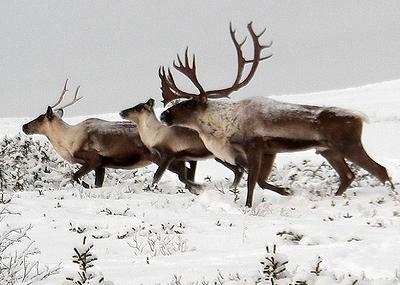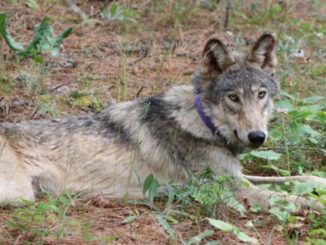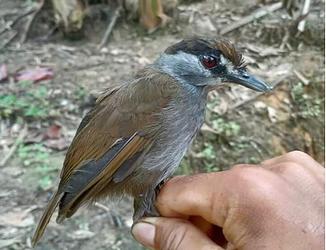
ANCHORAGE, Alaska, January 14, 2020 (ENS) – The Trump administration has begun to auction off roughly one-third of Alaska’s Arctic National Wildlife Refuge for oil drilling. It is no coincidence that this lease sale was announced with only a few weeks left in the Trump presidency, as President Donald Trump is eager to kickstart Arctic oil drilling before leaving the White House on January 20.
The refuge is home to some of the most diverse and spectacular wildlife in the Arctic, according to the U.S. Fish & Wildlife Service. “The refuge’s rich pageant of wildlife includes 42 fish species, 37 land mammals, eight marine mammals, and more than 200 migratory and resident bird species,” the USFWS says.

The refuge is a vast, remote wilderness where wildlife has been thriving. It is a haulout for seals, a year-round home for polar bears and Dall sheep, a caribou nursery, a hunting ground for wolves and ermine, and a maze for lemmings. Mammals there range in size from the Pigmy shrew, weighing 1/10th of an ounce, to the bull moose, weighing nearly 1,400 pounds.
On December 18, 2020, the Bureau of Land Management, BLM, announced the Trump administration’s plan for oil exploration in the refuge, as the agency is managing the lease sale.
This sale was made possible due to the 2017 tax cut bill which was spearheaded by Senator Lisa Murkowski, an Alaska Republican, that required there to be two lease sales in the Arctic National Wildlife Refuge, ANWR, with one of them occurring before 2022.
Companies started bidding for leases in ANWR’s 1.6 million acres on December 26. In the rush to sell these leases, the usual public comment period was not held.
Also, the Interior Department, of which the BLM is a part, only allowed outside concerns to be raised if they were sent in the postal mail, disregarding any online comments. Conservationists believe that the Trump administration asked for any public comments to be mailed so that the content can be concealed and public knowledge of the sale limited.
In the first lease auction on December 26, the Trump administration did sell some leases, but many environmentalists see this auction as insignificant since there was inadequate interest from oil companies.
Only three bids were placed in the first auction, paying around $14.4 million, or about $27 per acre, compared to the total $1 billion in lease sales projected by the BLM.

The State of Alaska through the Alaska Industrial Development and Export Authority, AIDEA, won nearly every bid in the lease sale, underscoring the lack of interest on the part of most oil companies.
The AIDEA is not itself an oil company but a distributor for the economic development wing in Alaska, so AIDEA will resell the Arctic Refuge leases to companies that specialize in oil and can drill.
Most oil companies were not interested because they knew that they would be developing a lease in a wildlife refuge, and so many banks have refused to offer financial and public assistance for the project.
“It’s very odd because the State of Alaska will get 50 percent of the revenue from lease sales. Basically, they will be paying to not make any money on those lease sales,” Jenny Rowland-Shea, a senior public lands policy analyst with the Center for American Progress told “The Hill,” a newspaper in Washington, DC.
For decades, Democrats and environmentalists have been voicing their concerns about drilling in the Arctic National Wildlife Refuge as it will blemish the pristine wilderness and harm natural native wildlife.

“Trump is giving away treasured land in the Arctic Refuge at rock bottom prices in today’s oil/gas lease sale,” Congressman Jared Huffman, a California Democratic, tweeted, calling the sale a violation of human rights.
Huffman wrote a bill to stop any drilling in ANWR and it passed the House of Representatives but was not brought to the floor of the Republican-led Senate for a vote.
The area is considered sacred by the native Gwich’in tribe of northwestern Canada and northeastern Alaska. The Gwich’in Steering Committee, the legal representative group of the Gwich’in tribe, has filed four lawsuits against the ANWR lease sale, trying to overturn it.
“Any disturbance or disruption to the coastal plain is a direct attack on the Gwich’in way of life and the Gwich’in people,” said Bernadette Demientieff, executive director of the Gwich’in Steering Committee.
In Canada, more than 30 groups have joined the Arctic Refuge Defence Campaign, a coalition dedicated to protecting the refuge that provides breeding habitat to polar bears, migratory birds, and the 100,000 animals of the Porcupine Caribou Herd that Canada shares with the United States.
The State of Alaska purchased most of the leases sold on December 26 through the Alaska Industrial Development and Export Authority, with only two private companies securing tracts of land.
The BLM maintained that the sale was successful as it defended Alaska’s ability to buy most of the leases. Yet, overall, the ANWR sale was seen as unsuccessful as only half of the land being leased received bids. In total, the lease sale only generated $14 million, a fraction of the projected amount.
But the BLM also said that it shrank the area available for lease after drilling opponents expressed their worries about the disruption of a caribou herd that lives in the refuge. These concerns led to a cut of 457,000 acres from the original 1.56 million-acre lease offer.
“Here still survives one of Planet Earth’s own works of art,” wrote the pioneering National Park Service biologist Lowell Sumner. “This one symbolizes freedom: freedom to continue, unhindered and forever if we are willing, the particular story of Planet Earth unfolding here.”
Once sworn into office on January 20, President Joe Biden plans to grant permanent protection from development and oil drilling to the coastal plain of the Arctic National Wildlife Refuge.
— By Georgia Siedman
Copyright Environment News Service (ENS) 2021. All rights reserved.



